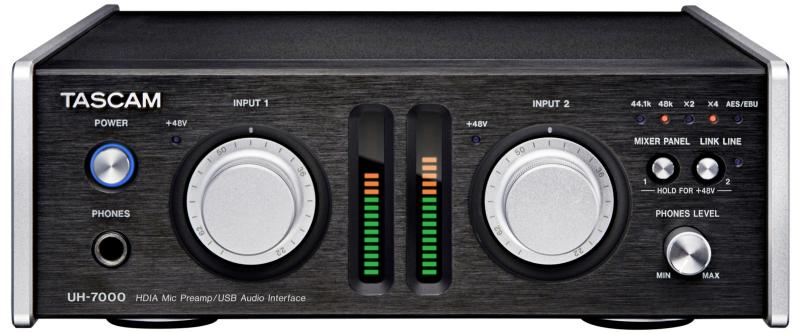The UH-7000 is a pro-level microphone preamp and audio interface, designed with a strong focus on low noise and high audio quality.
Not only can this unit be used as a 4-in/4-out audio interface in a DAW production environment, but as a standalone microphone preamp and AD/DA converter. The built-in HDIA (High Definition Instrumentation Architecture) microphone preamps are newly designed with low noise and high audio quality. These impressive mic pres perform at 128dBu EIN, a 117dB signal-to-noise ratio and distortion ratio of 0.0009% or less.
The grand nature of the UH-7000's sound is partially due to the careful attention spent on selecting parts. In addition to the Burr-Brown PCM4220 ADC, PCM1795 DAC converters and thin film metal resistors, installed is a powerful TCXO clock generator with +/1ppm precision.
The units half-rack size makes it easy to install at a studio console or work desk. The thick aluminum panels on the front and sides of the full-metal body increase stability. Highly important but easily forgotten are the smooth-tension aluminum input level knobs for precise level adjustments.
The UH-7000 microphone preamp and audio interface enables composers, musicians and recording engineers to produce music in their private quarters at a level only reached in professional studios.
